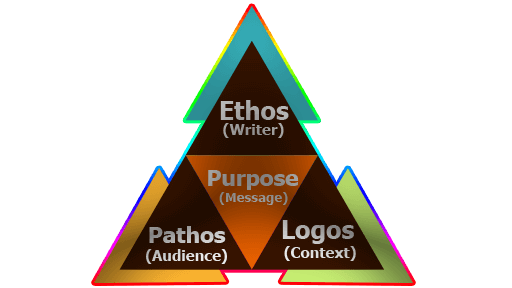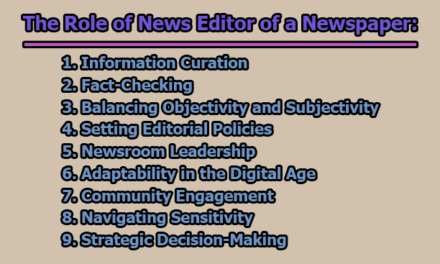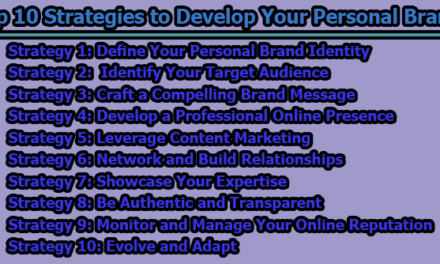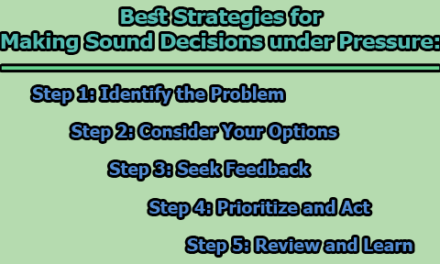Take Your Communication Skills to the Next Level with the Rhetorical Triangle:
Effective communication is a crucial skill in both personal and professional settings. Whether you’re trying to persuade others, convey information, or simply build better connections with people, your ability to communicate effectively can make all the difference. The Rhetorical Triangle is a tool that can help you take your communication skills to the next level, by providing a framework for crafting effective messages that resonate with your audience. In this article, we’ll take a closer look at what the Rhetorical Triangle is, why it’s important, and how you can use it to enhance your communication skills.
What is the Rhetorical Triangle and why is it important?
The Rhetorical Triangle is a framework for persuasive communication that involves three main elements: ethos, pathos, and logos. Ethos refers to the credibility or trustworthiness of the speaker or writer, pathos refers to the emotional appeal of the message, and logos refers to the logical or rational appeal of the message. By balancing these three elements, communicators can create messages that are not only engaging and emotionally resonant but also intellectually rigorous and persuasive.
Understanding the Rhetorical Triangle:
Definition of the Rhetorical Triangle: The Rhetorical Triangle is a framework that allows communicators to balance three key elements – ethos, pathos, and logos – in order to create effective and persuasive messages.
Importance of ethos, pathos, and logos: Each of the three elements in the Rhetorical Triangle plays a vital role in persuasive communication. Ethos, or the credibility of the speaker or writer, is essential for building trust with the audience. Pathos, or the emotional appeal of the message, helps to create an emotional connection with the audience. Finally, logos, or the logical appeal of the message, provides an intellectual basis for the argument being made.
Examples of each element in communication:
- Ethos: Barack Obama’s speeches, which often emphasized his personal background and character, are excellent examples of the effective use of ethos.
- Pathos: The ASPCA’s “In the Arms of an Angel” commercial – featuring Sarah McLachlan’s music and heart-wrenching images of abused animals – is a powerful example of the emotional appeal of pathos.
- Logos: A well-researched scientific paper that presents a logical and evidence-based argument is an example of the use of logos in communication.
Why ethos is important in communication: Ethos is important in communication because it helps to establish the credibility of the speaker or writer, which in turn builds trust with the audience. Without credibility, messages may not be taken seriously, and the persuasive power of the message may be diminished.
How to establish ethos: There are several ways to establish ethos in communication. These include:
- Emphasizing personal experience or expertise.
- Quoting reputable sources.
- Using statistics and data to support arguments.
- Demonstrating a commitment to honesty and integrity.
Examples of effective use of ethos: The TED Talk by psychologist Angela Duckworth, “Grit: The Power of Passion and Perseverance,” effectively establishes ethos by drawing on the author’s personal experience and research expertise to support her argument.
Why pathos is important in communication: Pathos is important in communication because it helps to create an emotional connection between the speaker or writer and the audience. By tapping into the audience’s emotions, communicators can create a powerful and memorable message that resonates long after the message has been delivered.
How to evoke emotions through pathos: There are several ways to evoke emotions through pathos. These include:
- Using vivid imagery or storytelling.
- Taking a personal or human interest approach.
- Using humor or irony
Examples of effective use of pathos: Apple’s “Think Different” campaign, which featured the iconic “Crazy Ones” commercial, effectively evokes a sense of awe and inspiration through its use of pathos.
Why logos is important in communication: Logos is important in communication because it provides an intellectual basis for the argument being made. By presenting logical reasons and evidence, communicators can strengthen their message and convince the audience of their position.
How to use logic in persuasion: There are several ways to use logic in persuasive communication. These include:
- Presenting a logical argument in a step-by-step manner.
- Using analogies or metaphors to simplify complex ideas.
- Anticipating counterarguments and addressing them proactively.
Examples of effective use of logos: The “Got Milk?” advertising campaign, which highlighted the health benefits of drinking milk, is an effective example of the use of logos.
Rhetorical Appeals in Practice:
The Rhetorical Triangle can be applied in a variety of settings, including speeches and presentations, writing, and advertising.
Use of the Rhetorical Triangle in speeches and presentations: When delivering a speech or presentation, communicators can use the Rhetorical Triangle to create messages that are both engaging and persuasive.
Use of the Rhetorical Triangle in writing: In writing, the Rhetorical Triangle can be used to create messages that are clear, concise, and persuasive.
Use of the Rhetorical Triangle in marketing and advertising: In marketing and advertising, the Rhetorical Triangle can be used to create campaigns that resonate with the target audience and persuade them to take action.
Examples of successful campaigns using the Rhetorical Triangle: The Nike “Just Do It” campaign, which emphasized the emotional appeal of pathos, is an excellent example of the successful use of the Rhetorical Triangle.
Improving Your Communication Skills with the Rhetorical Triangle:
By incorporating the Rhetorical Triangle in your daily communication, you can enhance your ability to persuade and influence others, improve your listening and understanding skills, and increase your confidence in communication.
Using the Rhetorical Triangle in everyday conversations: By using the Rhetorical Triangle in everyday conversations, you can create messages that are engaging, persuasive, and memorable.
Analyzing your own communication style and areas for improvement: By analyzing your own communication style and identifying areas for improvement, you can become a more effective communicator and increase your impact on others.
Practice exercises for incorporating the Rhetorical Triangle in communication: There are several practice exercises you can use to incorporate the Rhetorical Triangle in your daily communication. These include:
- Writing persuasive essays or speeches.
- Practicing active listening and empathy.
- Analyzing the communication of others and identifying the elements of the Rhetorical Triangle in their messages.
Common Misconceptions About the Rhetorical Triangle:
Despite its many benefits, there are several misconceptions about the Rhetorical Triangle that can hold people back from using it effectively.
Myth: The Rhetorical Triangle is only for public speaking: While the Rhetorical Triangle is often associated with public speaking, it can be applied in a variety of communication settings.
Myth: The Rhetorical Triangle is only for persuasive communication: While the Rhetorical Triangle is often used in persuasive communication, it can also be used to create messages that inform, educate, and entertain.
Myth: The Rhetorical Triangle is too complicated for everyday use: While the Rhetorical Triangle can be a complex concept, it can be adapted for everyday communication with a little practice and effort.
Advantages of Mastering the Rhetorical Triangle:
By mastering the Rhetorical Triangle, you can enjoy several key advantages in both personal and professional settings.
Enhanced ability to persuade and influence others: By using the Rhetorical Triangle in your communication, you can become a more effective persuader and influencer, with the ability to create messages that resonate with your audience.
Improved listening and understanding skills: By incorporating the Rhetorical Triangle in your communication, you can become a better listener and develop a deeper understanding of others’ perspectives.
Increased confidence in communication: By mastering the Rhetorical Triangle, you can develop greater confidence in your communication abilities, which can translate into increased success and achievement.
Advantages in personal and professional settings: By incorporating the Rhetorical Triangle in your daily communication, you can enjoy greater success and achievement in both personal and professional settings.
Criticisms of the Rhetorical Triangle:
While the Rhetorical Triangle has many benefits, it has also been criticized for being manipulative and too structured.
Criticism: The Rhetorical Triangle is manipulative: Some critics argue that the Rhetorical Triangle is manipulative because it emphasizes persuasion and influence over honest and open communication.
Criticism: The Rhetorical Triangle is too structured and limits creativity: Others argue that the Rhetorical Triangle is too structured and formulaic and that it limits creativity and spontaneity in communication.
In conclusion, the Rhetorical Triangle is a powerful tool for enhancing your communication skills in a variety of settings. By understanding the key elements of ethos, pathos, and logos, and incorporating them into your communication, you can become a more effective and persuasive communicator, with the ability to engage and influence others. With a little practice and effort, you too can take your communication skills to the next level.
FAQs:
What is the origin of the Rhetorical Triangle?
The Rhetorical Triangle has its roots in ancient Greek philosophy, specifically the work of Aristotle.
Can the Rhetorical Triangle be used in non-English communication?
Yes, the Rhetorical Triangle can be applied in any language.
How can one use the Rhetorical Triangle in written communication?
One can use the Rhetorical Triangle in written communication by incorporating elements of ethos, pathos, and logos into their writing.
What are some common mistakes made when applying the Rhetorical Triangle?
Some common mistakes include overemphasizing one element to the exclusion of others, failing to consider the audience’s perspective, and being too formulaic or rigid in approach.
Can the Rhetorical Triangle be overused?
Yes, the Rhetorical Triangle can be overused if it becomes too formulaic or predictable in its application.
How long does it take to master the Rhetorical Triangle?
Mastering the Rhetorical Triangle is an ongoing process that requires practice, feedback, and reflection.
What resources are available for further study of the Rhetorical Triangle?
There are many resources available for further study of the Rhetorical Triangle, including books, articles, podcasts, and training courses.
Take Your Communication Skills to the Next Level with the Rhetorical Triangle; Take Your Communication Skills to the Next Level with the Rhetorical Triangle

Former Student at Rajshahi University










